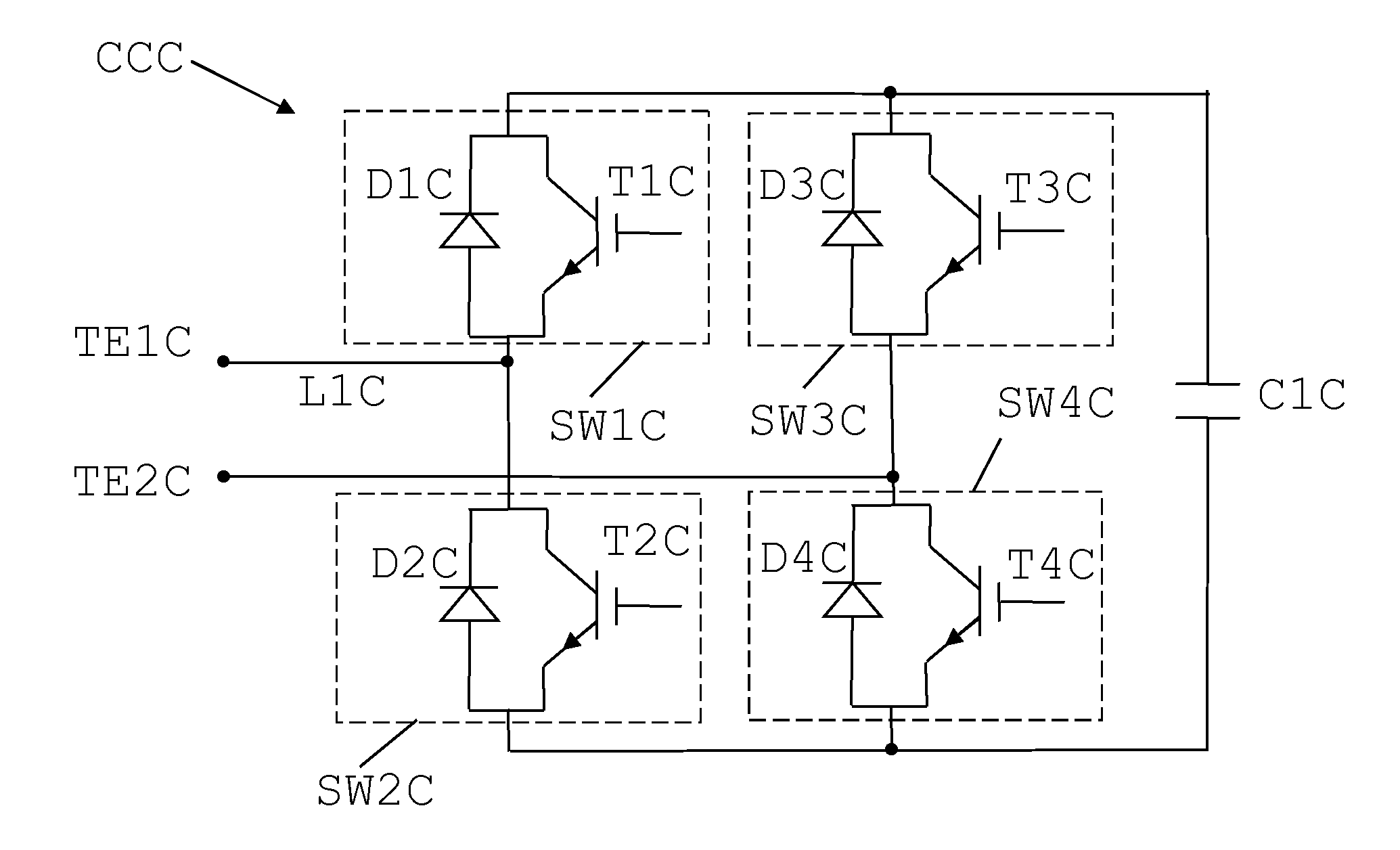Multilevel converter with cells being selected based on phase arm current
a multi-level converter and phase arm current technology, applied in the field of multi-level converters, can solve problems such as losses and associated switching, and achieve the effects of reducing the total switching loss of the multi-level converter, and reducing the switching frequency
- Summary
- Abstract
- Description
- Claims
- Application Information
AI Technical Summary
Benefits of technology
Problems solved by technology
Method used
Image
Examples
first embodiment
[0049]The mathematical approach, which forms the invention, will now be described in more detail.
[0050]FIG. 5 shows a sample curve of the reference voltage (Vref) to be provided together with the normalized phase arm current I, i.e. the phase arm current divided by its maximum value. It can be seen that both the voltage and current are periodic, where the current is a sine wave with a DC component. The curves in FIG. 5 thus show the required voltage level Vref in each time instance, which voltage level may become discretized due to the finite number of cells.
[0051]Also various discrete switching times are shown, where there is a first switching time to, a second switching time t1, a third switching time t2, a fourth switching time t3, a fifth switching time t4, a sixth switching time t5, a seventh switching time t6, an eighth switching time t7 and a ninth switching time t8. It should be realized that the time steps shown are mere examples use din order to show the principles of the ...
second embodiment
[0093]A more hands-on type of method requiring less processing while still giving satisfactory results will now be described in relation FIG. 8, which shows a number of method steps in a method of selecting cells according to a
[0094]The current is continuously measured by the current sensor CS and reported to the voltage balancing control element 14, which thereby receives current measurements step 34. Also the cell voltages of the cells are obtained from the cells by the voltage balancing control element 14, which thus also receives the cell voltages, step 36. The reference voltage providing element 16 also provides the reference voltage Vref to the voltage balancing element 14 and thereby the voltage balancing element 14 also receives the reference voltage Vref, step 38.
[0095]The voltage balancing element 16 then compares the current level of the measured current with a current level threshold, which threshold may be a zero level threshold. Thereby the voltage balancing element 14...
PUM
 Login to View More
Login to View More Abstract
Description
Claims
Application Information
 Login to View More
Login to View More - R&D
- Intellectual Property
- Life Sciences
- Materials
- Tech Scout
- Unparalleled Data Quality
- Higher Quality Content
- 60% Fewer Hallucinations
Browse by: Latest US Patents, China's latest patents, Technical Efficacy Thesaurus, Application Domain, Technology Topic, Popular Technical Reports.
© 2025 PatSnap. All rights reserved.Legal|Privacy policy|Modern Slavery Act Transparency Statement|Sitemap|About US| Contact US: help@patsnap.com



